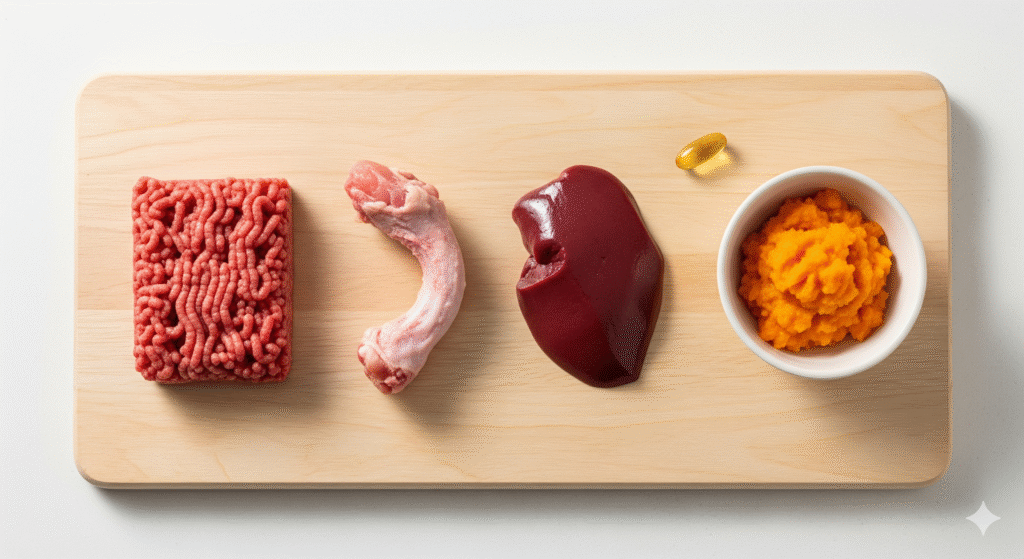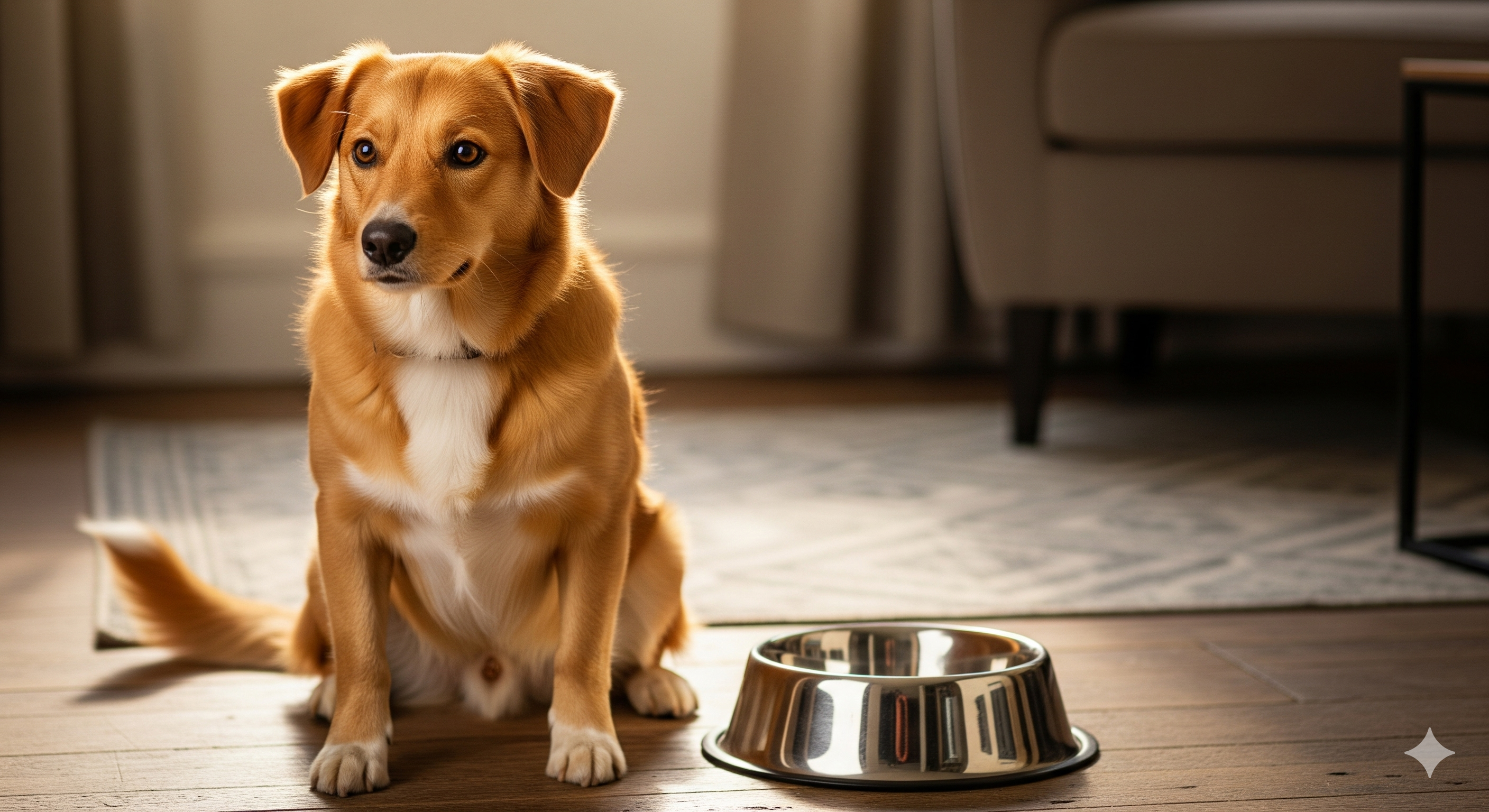The decision of what to feed your puppy is one of the most important choices you’ll make as a new pet owner. Among the various options, raw food for puppies has surged in popularity, promising shinier coats, cleaner teeth, and more natural energy. Proponents call it the “Biologically Appropriate Raw Food” (BARF) diet, claiming it mirrors what canines would eat in the wild. However, the practice is also surrounded by significant controversy, especially when it comes to growing puppies with specific nutritional needs.
This comprehensive guide cuts through the hype and fear to give you a balanced, evidence-based look at raw feeding. We’ll provide the facts you need to make an informed decision for your furry family member.
Here’s what we’ll cover:
✔️ What a raw diet actually entails and the different approaches
✔️ The potential benefits touted by advocates
✔️ The significant risks and challenges, especially for puppies
✔️ A step-by-step guide on how to start if you choose to proceed
✔️ How to ensure a balanced diet for optimal growth
✔️ Veterinary insights on the safety and practicality of raw feeding
Let’s dive into the complex world of raw nutrition for growing dogs.
What is a Raw Food Diet for Puppies? 🧐
A raw food diet typically consists of uncooked ingredients, aiming to mimic a wild canine’s diet. There are several models, but most include:
- Muscle Meat: The foundation of the diet (e.g., chicken, turkey, beef, lamb).
- Raw Meaty Bones: Important for calcium, phosphorus, and dental health (e.g., chicken wings, necks, backs). Must be size-appropriate to avoid choking.
- Organ Meats: A crucial component for vitamins and minerals (e.g., liver, kidney, heart).
- Other Ingredients: Some plans include small amounts of vegetables, fruits, eggs, dairy (like yogurt), or supplements.
The two main schools of thought are:
- Prey Model: Focuses almost exclusively on meat, bones, and organs, excluding most plant matter.
- BARF Model (Biologically Appropriate Raw Food): Includes meat, bones, organs, and also incorporates vegetables, fruits, and other ingredients.
The Proposed Benefits of Raw Feeding 🏆
Advocates for raw feeding report numerous anecdotal benefits, though scientific backing is often limited.
- Healthier Skin and Coat: Often attributed to the high levels of natural oils and fatty acids in raw meat.
- Improved Dental Health: Chewing on raw meaty bones can help scrape plaque and tartar off teeth.
- Higher Energy Levels: Owners often report their dogs have more vibrant, sustained energy.
- Smaller, Less Stinky Stool: With more digestible ingredients, less waste is produced, and it tends to be firmer and less odorous.
- Fewer Allergies: Some believe that eliminating processed ingredients and grains can reduce allergic reactions.
The Significant Risks and Challenges ⚠️
This is the most critical section for any puppy owner to understand. The risks are substantial and are the primary reason many veterinarians caution against raw diets, especially for puppies.
1. Nutritional Imbalance 🚫
Puppies have very specific and strict requirements for calcium, phosphorus, and other nutrients to support their rapid bone and organ growth. Getting this balance wrong at home can lead to severe, irreversible consequences like metabolic bone disease, deformities, and growth issues. This is the single biggest risk of a DIY raw diet.
2. Bacterial Contamination 🦠
Raw meat can harbor dangerous pathogens like Salmonella, Listeria, and E. coli.
- Risk to the Puppy: Can cause serious, sometimes fatal, gastrointestinal illness.
- Risk to Humans: These bacteria can be shed in the puppy’s feces and saliva, posing a serious health risk to humans in the household, particularly children, the elderly, and immunocompromised individuals.
3. Parasites 🐛
Improperly sourced or frozen meat can contain parasites like Toxoplasma gondii or tapeworms.
4. Physical Hazards 🔨
- Choking: Bones can splinter or become lodged in the throat or digestive tract.
- Dental Fractures: Chewing on hard bones can break a puppy’s teeth.
How to Start a Raw Diet for Your Puppy Safely (If You Proceed) 🚦
If you understand the risks and wish to proceed, doing so safely is non-negotiable.
Step 1: Consult a Veterinary Nutritionist 🩺
This is not optional. Do not rely on internet recipes alone. A board-certified veterinary nutritionist can formulate a balanced recipe specifically for your puppy’s breed, size, and age, or recommend a reputable commercial raw food that meets AAFCO standards for growth.
Step 2: Source High-Quality Ingredients 🛒
- Use human-grade meat from reputable sources.
- Ensure all meat is fresh and handled with proper food safety protocols.
Step 3: Practice Impeccable Hygiene 🧼
- Wash hands, bowls, and surfaces with hot, soapy water after every meal.
- Disinfect preparation areas with a bleach solution.
- Immediately pick up and dispose of your puppy’s stool.
Step 4: The Transition 🔄
- Transition slowly over 7-10 days, mixing a small amount of raw food into their current diet and gradually increasing the ratio.
- Monitor your puppy closely for any signs of digestive upset or illness.
Commercial Raw vs. Homemade Raw 🏭
For beginners, a commercial raw diet that is complete, balanced, and AAFCO-approved for “growth” or “all life stages” is often a safer choice than DIY.
- Pros of Commercial: Formulated by nutritionists, pre-portioned, often high-pressure pasteurized (HPP) to kill pathogens, and takes the guesswork out of balance.
- Cons of Commercial: More expensive, requires freezer space.
A Sample Balanced Raw Meal Plan (For Educational Purposes) 📋
Disclaimer: This is a sample framework ONLY. Exact portions must be calculated by a professional based on your puppy’s weight and age.
A common starting ratio is:
- 70% Muscle Meat (e.g., chicken thigh, beef heart)
- 10% Raw Edible Bone (e.g., ground chicken bone, quail)
- 10% Organ Meat (half of which, 5%, should be liver)
- 10% Vegetables/Other (pureed & dog-safe, like spinach, broccoli, blueberries)
Supplements like fish oil, vitamin E, and others are almost always necessary to achieve full balance.
The Veterinary Perspective: A Word of Caution 🗣️
Major veterinary organizations like the American Veterinary Medical Association (AVMA) and the FDA discourage raw diets, particularly for puppies, due to the public health risks and high potential for nutritional deficiencies. Their stance is that the risks outweigh the unproven benefits. Always discuss this choice openly with your veterinarian.
Final Checklist: Is Raw Feeding Right For You? ✅
☑️ I have consulted with a veterinary nutritionist.
☑️ I understand and accept the risks of bacterial contamination.
☑️ I am committed to practicing extreme hygiene.
☑️ I have the time, budget, and freezer space to commit.
☑️ I am prepared to monitor my puppy’s health closely and get regular blood work.

Be Prepared and Stay Calm. Vaccinations are safe and essential, but being informed helps you provide the best care afterward. Knowing what to expect will ease your mind and ensure you know exactly when to call the vet. For a comprehensive list of common reactions and serious warning signs, bookmark this essential resource: Puppy Vaccination Side Effects to Watch For.






